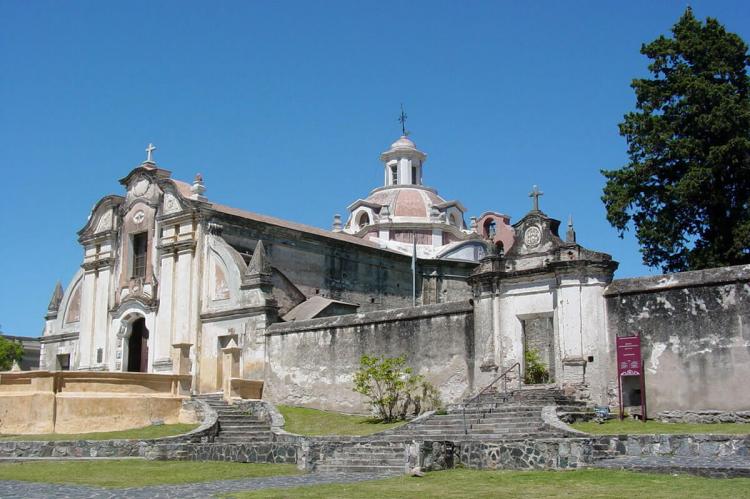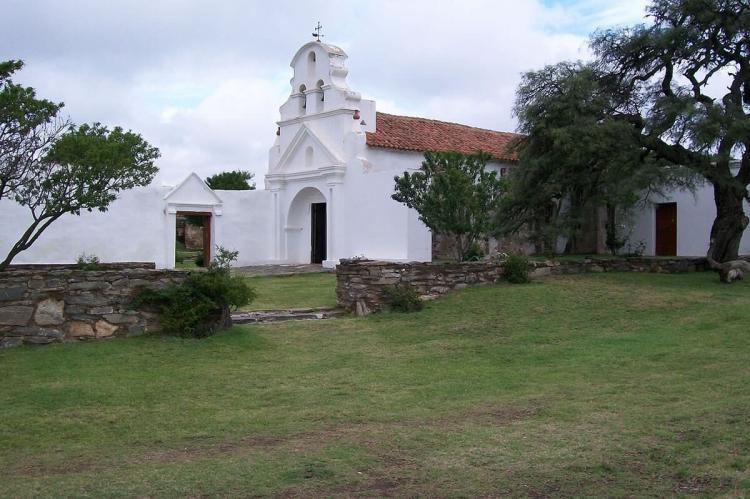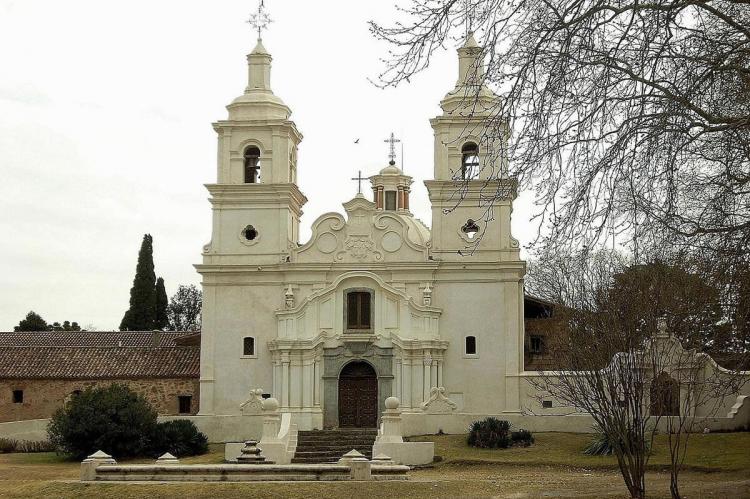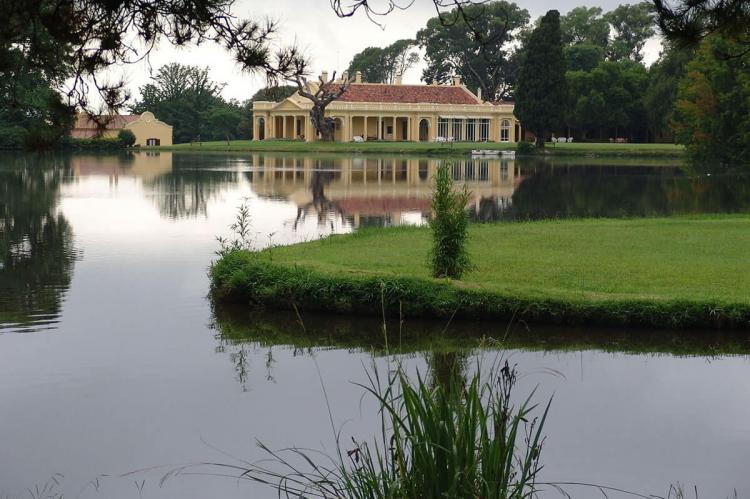The Jesuit Block and Estancias of Córdoba: A Testament to Cultural Exchange
The Jesuit Block and Estancias of Córdoba stand as a powerful testament to the enduring influence of Jesuit missionaries in shaping South America's cultural, religious, and economic landscape. A World Heritage Site, this remarkable ensemble transcends its architectural and historical significance.
The Jesuit Block and Estancias of Córdoba: A Testament to Cultural Exchange
The Jesuit Block and Estancias of Córdoba stand as a powerful testament to the enduring influence of Jesuit missionaries in shaping South America's cultural, religious, and economic landscape. Designated a UNESCO World Heritage Site in 2000, this remarkable ensemble transcends its architectural and historical significance. It embodies a vast religious, political, economic, legal, and cultural system, leaving an indelible mark on the region's development.
Physical Structures and Landscapes
The UNESCO World Heritage Site of the Jesuit Block and Estancias of Córdoba encompasses diverse physical structures and landscapes that reflect the multifaceted nature of Jesuit missionary activity in colonial South America.
Jesuit Block (Manzana Jesuítica): At the heart of the site lies the Jesuit Block, a complex of religious, educational, and administrative buildings located in the city of Córdoba, Argentina. The Jesuit Block includes the grand church, the priest's residence, the University of Córdoba, and the Colegio Convictorio de Montserrat.
Estancias: Surrounding the urban center of Córdoba are five estancias or rural estates: Alta Gracia, Santa Catalina, Jesús María, La Candelaria, and Caroya. These estancias served as agricultural and manufacturing centers, each featuring a church or chapel, priests' residence, and various agricultural facilities.
Churches and Chapels: Throughout the Jesuit Block and the estancias, numerous churches and chapels served as spiritual centers for the communities. These buildings blend European and indigenous architectural styles, reflecting the cultural synthesis fostered by the Jesuit missionaries.
Residences and Workshops: The priests' residences within the Jesuit Block and the estancias provided living quarters for the clergy and served as centers of community life. Additionally, workshops where indigenous and African artisans produced goods ranging from textiles to pottery under the guidance of the Jesuits were present.
Agricultural Facilities: The estancias were equipped with various agrarian facilities, including fields, pastures, orchards, and livestock enclosures. Innovative farming techniques were employed to cultivate crops and raise livestock, contributing to the economic self-sufficiency of the Jesuit settlements.
Hydraulic Systems: The Jesuits implemented sophisticated hydraulic systems, including irrigation ditches, canals, and reservoirs, to support agricultural activities and provide water for the communities. These systems were essential for sustaining life in the arid climate of colonial South America.
Educational Institutions: The University of Córdoba, housed within the Jesuit Block, played a central role in the region's intellectual and cultural life. Alongside the university, secondary schools such as the Colegio Convictorio de Montserrat provided education and moral formation to the community's youth.
A Flourishing Hub of Education and Faith
Nestled in Argentina's heart, the Jesuit Block in Córdoba served as the epicenter of the former Jesuit Province of Paraguay. Within its confines, a vibrant community thrived for over 150 years. The grand church, a towering edifice, served as the spiritual focal point, while the adjacent priests' residence provided a haven for prayer and contemplation.
Notably, the University of Córdoba, founded in 1613, is a lasting legacy. As one of the oldest universities in South America, it attracted students from across the continent, fostering intellectual inquiry and disseminating knowledge imbued with Jesuit values. The esteemed Colegio Convictorio de Montserrat complemented the university, providing secondary education grounded in Jesuit pedagogy and moral formation.
Beyond the Block: The Flourishing Estancias
The Jesuit influence extended beyond the urban center. Strategically dispersed throughout the countryside, six estancias – Alta Gracia, Santa Catalina, Jesús María, La Candelaria, and Caroya – played a crucial role in the Jesuit mission. Each meticulously planned estancia boasted a church or chapel, a priest's residence, and extensive agricultural facilities. These outposts served as centers for evangelization and as hubs of economic activity.
Through innovative techniques and irrigation systems, the Jesuits transformed arid landscapes into thriving agricultural centers, producing crops and livestock that sustained local populations and the larger Jesuit enterprise. Moreover, these estancias served as vital nodes in a vast trade network, facilitating the exchange of goods and ideas.
A Tapestry of Cultural Fusion
The Jesuit Block and Estancias are living testaments to the dynamic interplay of European, Native American, and African cultures during a transformative period in South American history. This rich amalgamation of cultural exchange is evident in the architectural landscape. European Baroque influences mingle with Indigenous building techniques and decorative motifs, resulting in a unique, imposing, inviting style.
Similarly, the convergence of cultural practices is evident in the estancias' fields and workshops of the estancias. Here, indigenous agricultural knowledge blended with European farming techniques, while workshops saw the merging of indigenous craftsmanship with European design principles, producing a unique array of artisanal goods. Notably, the Jesuit approach to spirituality fostered a sense of cultural hybridity. While seeking to convert the indigenous populations to Christianity, they also accommodated and integrated pre-existing belief systems, promoting religious tolerance.
A Legacy of Resilience and Innovation
The Jesuit Block and Estancias of Córdoba powerfully remind us of the enduring legacy of Jesuit missionary activity. They symbolize resilience, innovation, and cross-cultural exchange, inviting exploration of their rich mosaic of history and heritage. Preserving and celebrating the enduring contributions of the Jesuit missionaries who irrevocably shaped the landscape of South America is a collective responsibility.





